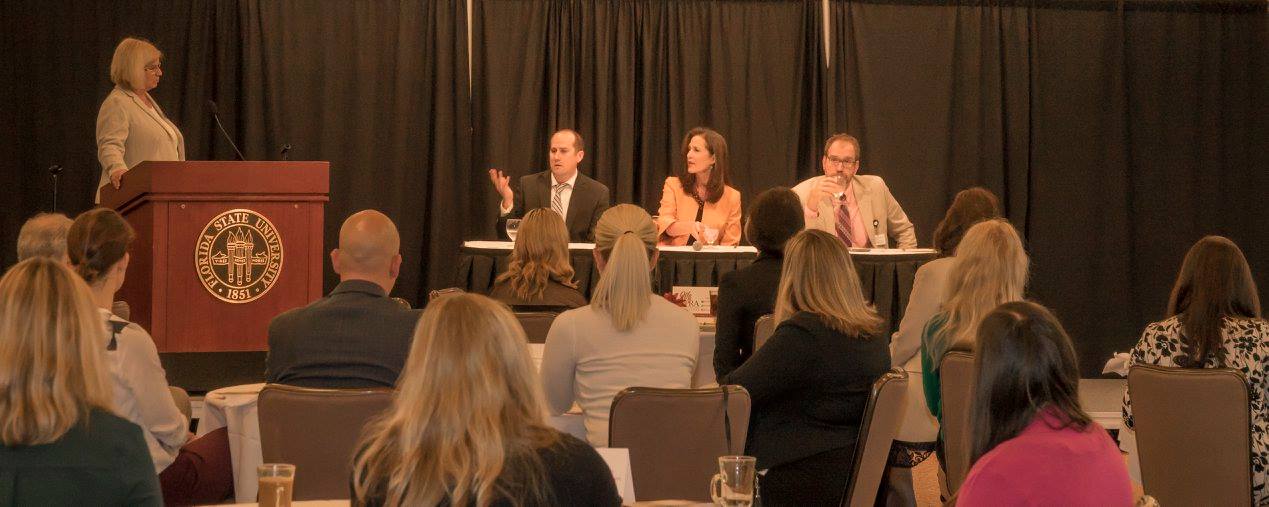October Program Recap
“The (Sensationalized) State of Journalism”
Thursday, October 19, 2017 / 7:30 – 9:30 a.m. / FSU Alumni Center
Top Takeaways:
- The proliferation of fake news is due, in part, to diminishing newsroom resources.
- Before believing a story: verify, verify, verify.
- When working with the media:
1. Be available
2. Provide multimedia elements to enhance a story
3. Connect reporters with real people who tell a story and embody the issue
Recap
With the onset of the digital age, and the proliferation of bloggers, and websites purporting to be “media,” it is now more difficult than ever to sort the genuine from the false news outlets.
On Thursday, October 19, members of the Capital Chapter had the opportunity to hear from three respected reporters of real news – Mary Ellen Klas (capital bureau chief, Miami Herald, and co-bureau chief, Tampa Bay Times), William Hatfield (executive editor, Tallahassee Democrat), and Gray Rohrer (Tallahassee bureau reporter, Orlando Sentinel) – and participate in a discussion about the state of journalism. Moderated by Michelle Bono of Bono Communications & Marketing, the event discussed the many definitions of “fake” when applied to the media, the public’s appetite for hyped stories, and how to separate the real outlets from the misleading ones. Members were encouraged to ask questions of the panelists.
Hatfield confirmed what many people fear: The term “fake news” is a label used for a story the reader doesn’t like. He also discussed how the business models for Facebook and Google are designed to confirm beliefs, creating an echo chamber; thus, lowering the tolerance for challenging what is viewed and read.
According to Klas, fake news is, “Not just a threat to the industry, but a threat to erode democracy.” She offered this list of questions to ask yourself when thinking critically about a news story:
- Who is the author?
- Who is the publisher?
- What’s their business model?
- When was this published?
- Who are the sources?
The panelists also discussed social media’s growing influence on the decisions happening in newsrooms. Attendees heard about how clicks, likes, retweets, and comments are monitored by reporters, their editors, and advertising departments. Rohrer touched on how the tone and number of comments on articles changed when people were required to log in with their Facebook accounts and no longer able to hide behind a wall of anonymity.
This timely program provided members with important insights and exclusive personal stories from respected journalists on the front lines. Check out our Facebook page for photos from the event!
– Carla Brown Lucas, Brown Lucas Consulting (Member Since 2016)

